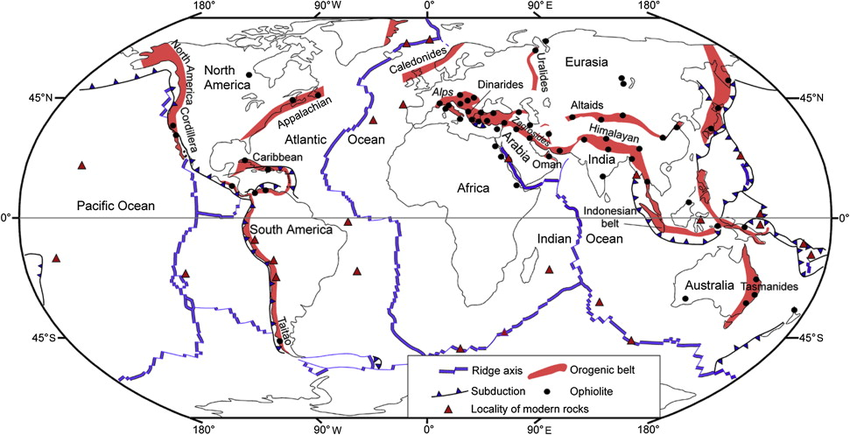
This is a map of sea level, exaggerated 10,000 times.
Why is it so weird and lumpy? Sea level is not defined by distance from Earth's center - it's an equal-gravity surface.
Understanding the #geoid is key to understanding #climatechange impacts. 1/7
en.wikipedia.org/wiki/Geoid
Why is it so weird and lumpy? Sea level is not defined by distance from Earth's center - it's an equal-gravity surface.
Understanding the #geoid is key to understanding #climatechange impacts. 1/7
en.wikipedia.org/wiki/Geoid

The "lumpiness" comes from variations in density and topography. Mountains have gravity, so the #geoid is generally higher in mountainous regions. But inside the Earth there are variations, too - from the different kinds of rocks and the thickness of the crust. 2/7
Elevations on Earth are defined relative to the geoid. So every time you look at a topographic map, there's a secret geoid hidden behind that data! 3/7
The #geoid is not fixed - it changes as the balance of mass on Earth shifts. Mostly this is slow: tectonic movements, plate collision, erosion. Some of it is fast, but minor: volcanic eruptions, earthquakes.
Melting ice caps change the geoid too! 4/7
climate.nasa.gov/blog/2861/arct…
Melting ice caps change the geoid too! 4/7
climate.nasa.gov/blog/2861/arct…

As the ice caps melt, that mass gets distributed into the oceans. This lowers the geoid near the ice caps, and makes it appear that the land is locally rising.
This doesn't work for sea ice - that ice is already floating in water, so balanced. Only ice on land matters. 5/7
This doesn't work for sea ice - that ice is already floating in water, so balanced. Only ice on land matters. 5/7

This is why we can't talk about #sealevelrise with a single number: local impact depends on local geoid changes. So the weird lumpy Earth geoid - and its changes over time - are central to how coastal regions will be affected as the climate changes. 6/7
sealevel.nasa.gov/news/43/a-nasa…
sealevel.nasa.gov/news/43/a-nasa…

If you have a 3D printer, you can print your own lumpy #geoids at home! A great stocking-stuffer if you want to confuse and offend people. 7/7
oceanservice.noaa.gov/facts/geoid.ht…
oceanservice.noaa.gov/facts/geoid.ht…

• • •
Missing some Tweet in this thread? You can try to
force a refresh















